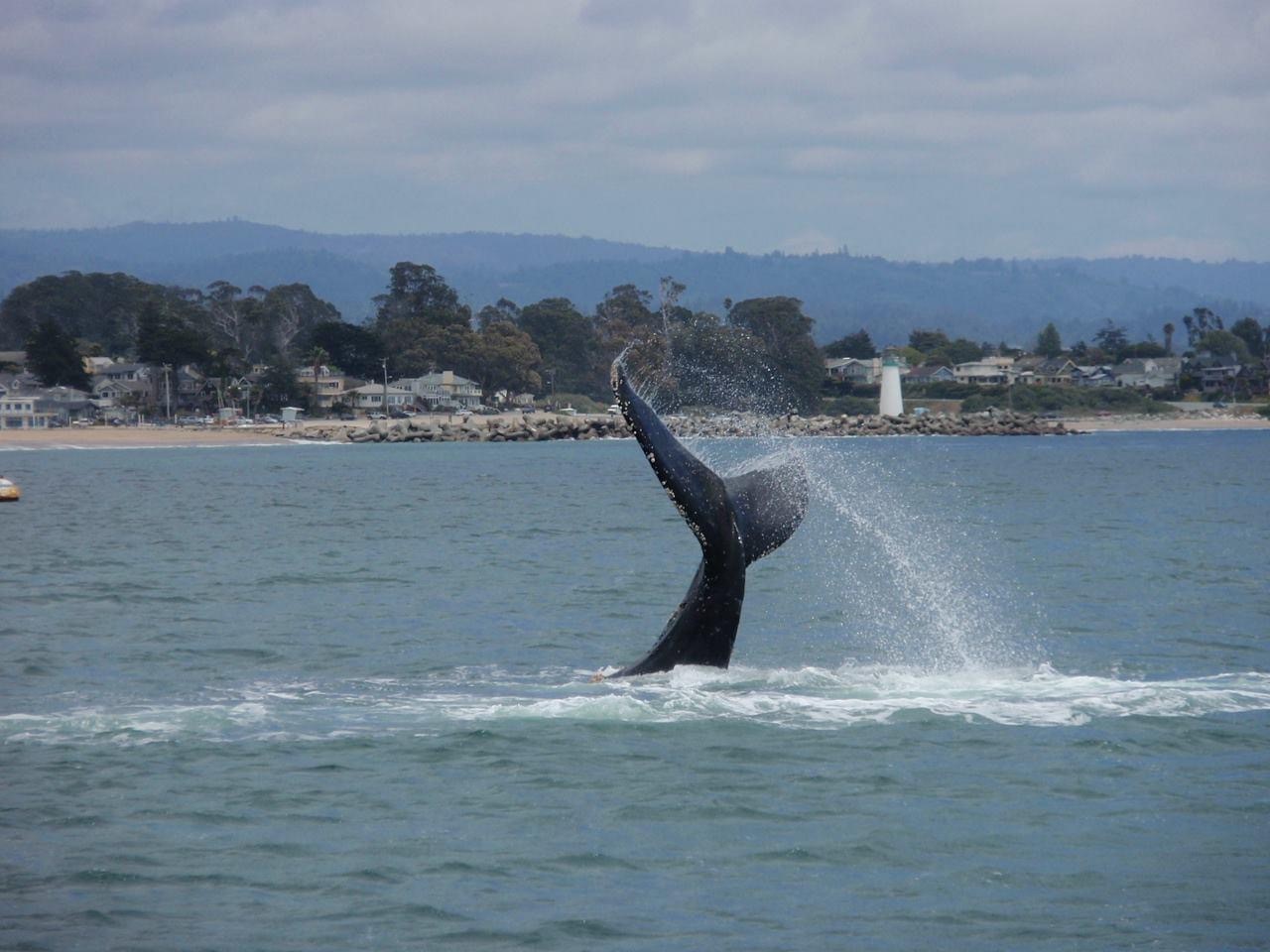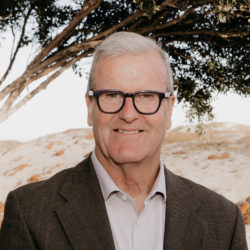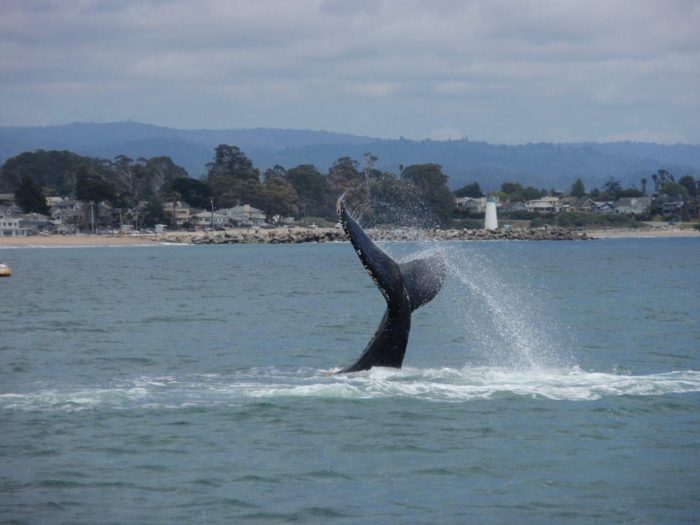
Sanctuary 30th Anniversary Series – Blog #4 “Finding sanctuary: The birth of a marine sanctuary” by Dan Haifley
Congressmember Leon Panetta had obtained authorization for a national marine sanctuary and by 1992, our environmental coalition and many others had been promoting the scientific case and public support for the largest boundary and strongest protections for it. But we were under no illusions we’d succeed.
Then, a 5 PM phone call at my home in Watsonville in mid-June changed everything. It was San Jose Mercury News reporter Ken McLaughlin, who’d received a fax from Air Force One. President George HW Bush had endorsed the largest possible boundary for the sanctuary.
This new national marine sanctuary would protect waters from Santa Rosa Creek in San Luis Obispo County to the southern boundary of the Gulf of the (now Greater) Farallones National Marine Sanctuary off Marin County. The campaign for the larger boundary involved the mailing of action alerts, phone calls, presentations, and lobbying. Thousands of people spoke at hearings or wrote letters in support. Without them, and the work done by elected officials, offshore oil could still be on the table today between Santa Cruz and San Francisco.
Monterey Bay National Marine Sanctuary would also protect its resources through a series of rules and cooperative agreements, such as one on water quality, and it would undertake research, education and outreach. Congressmember Leon Panetta had promised the fishing community, which was written into the management plan, that the sanctuary would not further regulate their work. That responsibility would remain with the California Department of Fish and Game (now Wildlife), and the National Marine Fisheries Service.
Some problems
California Governor Pete Wilson and Congressmember Tom Campbell, among others, had encouraged the George HW Bush administration to support this larger boundary. In developing its plan, NOAA was legally bound to consult with the state of California. Once we saw the final blueprint, members of the environmental community saw that it had some problems. So, after a phone call to the deputy director at Cal-EPA, Rachel Saunders of the Center for Marine Conservation and I drove to Sacramento hoping to fix them.
One was a “doughnut hole”, a roughly 100 square mile area without sanctuary status, to accommodate the Port of Oakland’s pre-existing dredge spoil dump site off San Francisco, and the City and County of San Francisco’s sewer system in which during periods of heavy rain, sewage would overflow into storm drains. In the years since the sanctuary was designated, San Francisco’s sewage system has been modernized, and the Port no longer disposes dredge materials there. The sanctuary also did not require the very highest level of treatment of sewage throughout the entire sanctuary as we had requested.
In our meeting we were told the plan was final, but that in the future the environmental community could work to fix some of the problems that had been identified. We faced two questions. Was this plan acceptable? And, if it wasn’t, would we ever see a similar one to protect one quarter of California’s 1,100-mile coastline again? My own answers to those questions came in a phone call with Casey Beyer, who was a staffer from Republican Congressmember Tom Campbell and had worked diligently on the sanctuary designation. He agreed with what the deputy director Cal-EPA told us, that we should support the plan and work on improving it after designation.
The New York Times ad
So, members of the Environmental Working Group supported the plan. We went so far as to speak out against a New York Times advertisement by some well-known environmentalists, including David Brower, urging that the plan should be scrapped and re-written.
The ad had been spotted by Dr. Jim Rote, who worked closely with State Assemblymember Sam Farr as policy consultant to the legislature’s Joint Fisheries Committee and was later a professor. It was Rote who had originally raised the alarm about potential offshore oil drilling in federal waters in the 1970s. He called me and said: “Did you see that New York Times ad? This can kill the whole thing.” Ms. Trudy Coxe was director of the NOAA department which housed the national marine sanctuary program. Dr. Rote felt that Coxe needed to believe that most environmentalists were excited by the plan if it were to move forward.
As I discussed in my last column, the Presidential election of 1992 played a key role in getting the large boundary for the sanctuary. A delay would have pushed its designation past the election cycle, making it more difficult—and probably impossible—to obtain a permanent ban on offshore oil drilling along 276 miles of coast. Congressmember Panetta had been working for years on an annual freeze on funding for federal offshore oil drilling, and without marine sanctuary status he would have had to continue that effort, with no guarantee of success. So, members of the Environmental Working Group spoke out against the ad and in favor of the plan.
In the end, there was no delay. Panetta worked to get Congress to codify the protections through legislation, and the largest marine sanctuary at 5,300 (later 6,094) square miles in the continental US was christened September 18, 1992. It lost that distinction in 2012 when the American Samoa Sanctuary became the largest, at 13,581 square miles. Today there is hope for new sanctuaries and expansion of existing ones—a story for another time. One part of that narrative is evolving now: Chumash Heritage National Marine Sanctuary, covering potentially more than 7,000 square miles off San Luis Obispo and northern Santa Barbara counties, would be the first tribally-nominated marine sanctuary to be designated.
Monterey Bay National Marine Sanctuary Foundation
Monterey Bay National Marine Sanctuary Foundation was established in 2017 to support the mission of the sanctuary and to raise funds to supplement the federal funds it receives. One of the projects that the foundation supports is the whale disentanglement team, in which California national marine sanctuaries are deeply involved. To help support research, education and outreach, and resource protection in the sanctuary, or to learn more about the planned 30th Anniversary Gala on September 17 and the Community Celebration on September 18, please go to montereybayfoundation.org.

Dan Haifley currently serves on the Monterey Bay National Marine Sanctuary Foundation board. He was director of Save Our Shores 1986-1993, and O’Neill Sea Odyssey from 1999-2019. He can be reached at dan.haifley@gmail.com. For more on the sanctuary’s 30th anniversary, go to montereybayfoundation.org.
About this series
Monterey Bay National Marine Sanctuary celebrates its 30th anniversary this fall, and the national sanctuary system celebrates its 50th. For the next 12 weeks, the Sentinel will publish columns by former U.S. Secretary of Defense Leon Panetta, along with Sam Farr, Dan Haifley, Fred Keeley, and Sanctuary Superintendent Dr. Lisa Wooninck. All of these contributors serve on the board of Monterey Bay National Marine Sanctuary Foundation and were involved with the Sanctuary’s designation.

